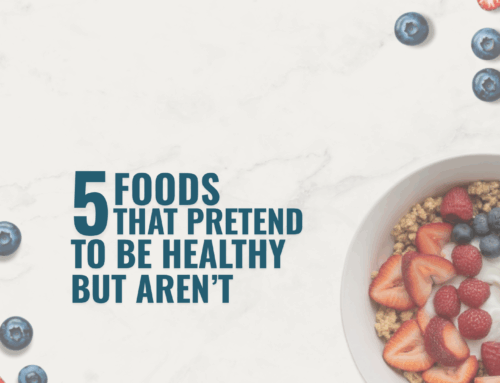When was the last time you had your cholesterol checked? It’s not necessarily the most exciting topic, but making sure your cholesterol levels are where they should be makes a big difference when it comes to preventing heart attacks and strokes. If you have been told your cholesterol is high, you may be wondering what you can do to improve your numbers. Before we discuss how to improve our cholesterol, let’s look at what cholesterol is and why it should matter to you.
Cholesterol is essential to human life. Your entire body is made of cells, and these cells are covered in a membrane. Cholesterol is an important part of this cell membrane. Cholesterol is also used by the body to make vitamin D and important hormones like cortisol, testosterone, estrogens and others. It also helps with the absorption of vitamins A, D, E, and K (1). Cholesterol moves around the body via the blood with triglycerides inside lipoproteins. Lipoproteins are particles made of protein and fat. Examples of lipoproteins include HLD, LDL, IDL, VLDL, and chylomicrons. You are probably most familiar with the terms LDL and HDL as these are what your doctor measures to estimate how much cholesterol is in your blood.
Cholesterol in the body
Cholesterol can come into the body when you digest dietary fat, but because cholesterol is very important to the body, your liver can make its own cholesterol. LDL particles are thought to bring cholesterol out into the body from the liver, and HDL particles are thought to take excess cholesterol from the body back to the liver for removal (2). When a person has excess weight, this physical state is often associated with high triglyceride levels, decreased HDL levels and increased LDL due to changes in lipoprotein metabolism that occur during obesity (3). However, people who are thin can also have high cholesterol levels, so it is important that everyone be checked.
Doctors worry about cholesterol levels because if your levels are high, you’re at higher risk of atherosclerosis. Atherosclerosis is a disease of the arteries characterized by plaques of fat, cholesterol and other material in your blood vessel walls. When these plaques get too large, they can make your arteries narrow, or they can suddenly rupture and a blood clot can form that cuts off blood flow. When this happens in your brain’s arteries you have a stroke, when this happens in your heart’s arteries you have a heart attack, and when this happens in the arteries of your arms or legs you have peripheral vascular disease (4). Peripheral vascular disease is a disease characterized by poor blood flow in the extremities that can lead to pain, poor wound healing and even amputations.
Now that we understand why it’s important to know our cholesterol levels, let’s talk about what we can do to treat and prevent high cholesterol. While our first instinct is to avoid food high in cholesterol, the relationship between dietary cholesterol and your blood cholesterol level is not as straightforward as one might assume. Researchers have been debating this relationship since the 1960s. Dietary cholesterol is found only in animal foods such as egg yolk, dairy products, shellfish, meats and poultry. There is now significant evidence that cholesterol levels in food do not significantly affect your blood cholesterol level (5). In 2015, the the dietary guidelines released by the U.S. Department of Health and Human Services and U.S. Department of Agriculture removed the previously recommended upper limit of dietary cholesterol intake (6).
Where to start
Instead of focusing on dietary cholesterol you should focus on replacing saturated fats with unsaturated fats, especially polyunsaturated fats. It is especially important that if you reduce the amount of consumed saturated fats, this is not replaced with refined carbohydrates as refined carbohydrates also have a negative effect on your cholesterol profile (7). How do you translate this nutrition advice into real life? First, focus on avoiding refined carbohydrates like soda, white pasta, white bread, French fries, sauces, baked goods. Instead, add healthy fats such as nuts, seeds, avocados, olive oil, and fish. In addition to diet, other changes you can make to improve your cholesterol include exercise, weight loss if necessary, stop smoking, drink alcohol only in moderation, and if this isn’t enough, discuss whether medications are needed with your doctor. If you would like further guidance on how to treat your cholesterol and lose weight, book an appointment at Maryland Weight Care. We are happy to answer all your questions and find a diet that promotes both a healthy weight and a healthy heart. Click here for a free consultation
References
- Di Ciaula A, Garruti G, Lunardi Baccetto R, Molina-Molina E, Bonfrate L, Wang DQ, Portincasa P. Bile Acid Physiology. Ann Hepatol. 2017 Nov;16(Suppl. 1: s3-105.):s4-s14.
- Huff, T., Boyd, B., & Jialal, I. (2023). Physiology, Cholesterol. PubMed; StatPearls Publishing. https://www.ncbi.nlm.nih.gov/books/NBK470561/#article-36745.r1
- Klop, B., Elte, J., & Cabezas, M. (2013). Dyslipidemia in Obesity: Mechanisms and Potential Targets. Nutrients, 5(4), 1218–1240. https://doi.org/10.3390/nu5041218
- Linton, M. F., Yancey, P. G., Davies, S. S., W. Gray Jerome, Linton, E. F., Song, W. L., Doran, A. C., & Vickers, K. C. (2019). The Role of Lipids and Lipoproteins in Atherosclerosis. Nih.gov; MDText.com, Inc. https://www.ncbi.nlm.nih.gov/books/NBK343489/
- Fernandez, M. L., & Murillo, A. G. (2022). Is There a Correlation between Dietary and Blood Cholesterol? Evidence from Epidemiological Data and Clinical Interventions. Nutrients, 14(10), 2168. https://doi.org/10.3390/nu14102168
- S. Department of Health and Human Services and U.S. Department of Agriculture. 2015–2020 Dietary Guidelines for Americans, 8th ed. [(accessed on 8 May 2022)];2015 Available online: https://health.gov/our-work/food-nutrition/previous-dietary-guidelines/2015
- Astrup, A., Dyerberg, J., Elwood, P., Hermansen, K., Hu, F. B., Jakobsen, M. U., Kok, F. J., Krauss, R. M., Lecerf, J. M., LeGrand, P., Nestel, P., Risérus, U., Sanders, T., Sinclair, A., Stender, S., Tholstrup, T., & Willett, W. C. (2011). The role of reducing intakes of saturated fat in the prevention of cardiovascular disease: where does the evidence stand in 2010? The American Journal of Clinical Nutrition, 93(4), 684–688. https://doi.org/10.3945/ajcn.110.004622





